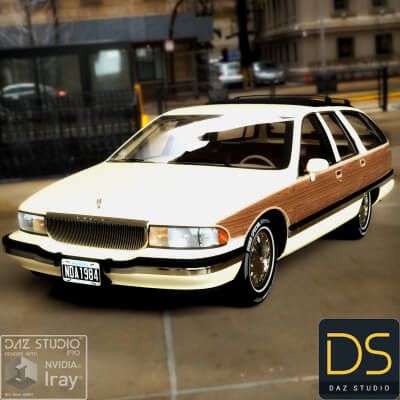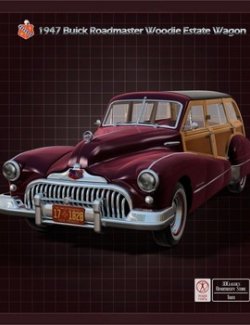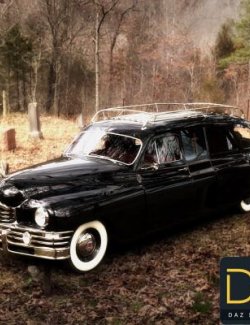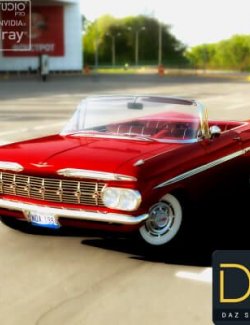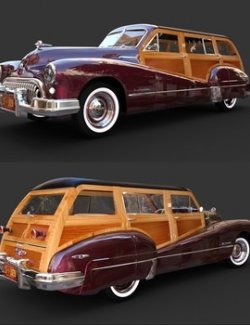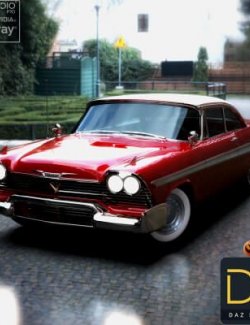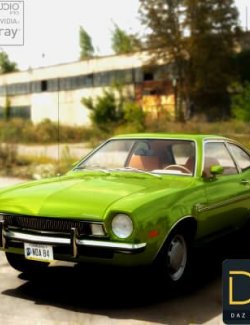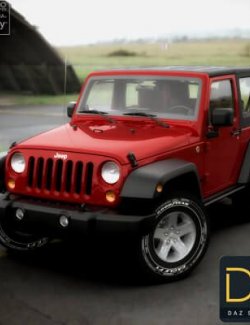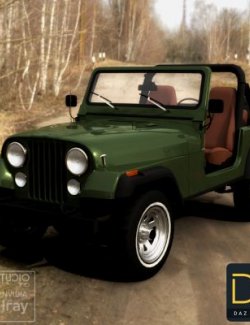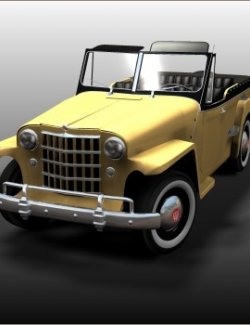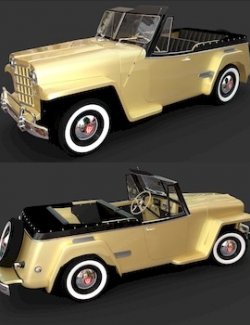Buick Roadmaster Estate Wagon 1991
The Buick Roadmaster is an automobile that was built by Buick from 1936 until 1942, from 1946 until 1958, and then again from 1991 until 1996. Roadmasters produced between 1936 and 1958 were built on Buick's longest non-limousine wheelbase and shared their basic structure with the entry-level Cadillac Series 65, the Buick Limited, and after 1940, the Oldsmobile 98. Between 1946 and 1957 the Roadmaster served as Buick's flagship.
When it was resurrected for the 1991 through 1996 model years, it became the marque's largest vehicle. The Roadmaster sedan, a C-body vehicle over its eight previous generations, shared the B-body for the first time in its history. It was 10 in (254 mm) longer with a 5 in (127 mm) greater wheelbase than the C-body Buick Park Avenue. It was also larger both in wheelbase (2 in (51 mm)) and overall length (6 in (152 mm)) than the K-body Cadillac DeVille.
A Buick Roadmaster Estate station wagon was introduced in 1947 and was manufactured in several generations through 1996.
While many people flock to SUVs in today s automotive market, there is an argument that station wagons are a much better choice. Stations wagons like the excellent Roadmaster have a long and varied history within Buick, going all the way back to the 1930s. But its most famous form is from 1990 to 1996, which was the eighth generation of the Roadmaster. It was within this generation that the Estate Wagon model came to fruition.
The Roadmaster Estate Wagon is part of a dying breed. Estate cars are becoming rarer and rarer, yet they have so many uses and are more practical in some ways than any SUV. So perhaps getting your hands on a classic car like the Roadmaster isn t a bad idea by any means.
Not only was the Roadmaster practical, but it was also quite a poignant car for General Motors. The Roadmaster, in its eighth generation, bid farewell to the brilliant GM B-Body platform. This was first introduced way back in 1926 as the company s full-size platform. It would go on to become one of the biggest sellers in GM s history. The Roadmaster Estate was one of the very last models to make use of this B-Body. Even in its last year, the B-Body was in brilliant form. It served the Roadmaster Estate very well.
Cars like the Roadmaster Estate just do not exist anymore. It really was the last in a long line of old-school American wagons. Big-bodied, gas-guzzling, and something quite special. Doug DeMuro recently delved into some of the quirks, features, and history of the Roadmaster. He, too, was visibly struck by the sheer size of the Roadmaster. The Roadmaster Estate is absolutely huge; it is some 220 inches in length and is actually longer than a modern Volvo XC90. By modern standards, that is a large car, yet the Roadmaster Estate was even bigger than a modern Volvo.
Some cars are big but still offer quite little practicality; the same is not true of the classic Roadmaster. The Roadmaster offers three rows of seating, and the third is a massive row. A third row that is also rear facing allows you to look out the rear window at where you have just been. Inside the more normal cabin areas of the Roadmaster wagon, there is still a lot of space. The front cabin provides an old-school, over-stuffed pair of seats that feel very comfortable.
The back not only has lots of space, but it also has a sunroof! Yes, you read that right. Buick called it Ultraview to give the rear passengers extra lightning. It s a neat and quite novel feature that has disappeared from modern cars thanks to panoramic roofs. At the time, though, it helped the Roadmaster Wagon stand out from much of the competition. So those in the front and the back had great amounts of space, although a weird novelty of the back was the lack of headrests and climate control vents. Yet these aren t even the quirkiest things about the Roadmaster Estate.
If the madness of the size and space wasn t enough, then the V8 power that is under the hood is surely going to surprise you. The power for the Roadmaster Wagon, in its 1996 guise, came from an LT1 V8 engine of 5.7 liters. This is the same engine found in the Chevrolet Corvette of the time. Although, like a lot of V8s of the time, it only produced 260 hp and 330 lb-ft of torque. For a family car, that was plenty. Even if that family car was as long as a US Navy Aircraft Carrier.
The Roadmaster Wagon was also a very interesting-looking car. It was long, very long, and the fake wood paneling added another layer to the design of the wagon. Of course, the Roadmaster as a whole disappeared after 1996. Making the Roadmaster Wagon quite the rare find now. But why did they disappear?
The answer for the Roadmaster s demise is three letters: SUV. The 1996 model year coincided with the arrival of some fresh and new GM SUVs. Such as the eight-gen Chevrolet Suburban and the Tahoe, while the Ford Expedition also came into production. While the overall concept of a long wagon didn t die, it effectively morphed into an SUV.
But in reality, an SUV offered very little over the wagon. They offered no more space than these old-school haulers. And as we see now, just because they are big, it doesn t mean they are practical. Perhaps what the world really needs is a return to the Buick Roadmaster Estate. Although, of course, with a more refined and updated approach.
The Roadmaster Estate wagon shared its body with the Caprice Estate and Oldsmobile Custom Cruiser; common styling features included the Caprice's headlights and the Custom Cruiser's 2nd-row "Vista Roof" with a sunroof. Simulated woodgrain sides were standard, though the treatment could be removed for credit. All three wagons offered an optional rear-facing third-row seat, bringing seating capacity to eight. The Roadmaster sedan had a distinct fascia, featuring its own grille and headlights stacked above running lights and turn signals. It shared a formal sedan roofline with the Cadillac Fleetwood, but was nine inches shorter in length and six inches in wheelbase. The 1995 and 1996 sedan models no longer had the Roadmaster emblem mounted on the quarter panels.
The interior received a redesign for the 1994 model year which included new dual airbags, moving some instrument panel gages closer to the steering wheel, and revisions to the radio and climate controls. The side-view mirrors were changed in 1995, changing from a "Lolipop" style mirror mounted on the door skin, to a new folding design mounted on the sail panel. [clarification needed] The 1995 Roadmaster retained its skirted rear wheels (removed from the Caprice/Impala SS), while the sedan was updated with new bodyside moldings. Station wagons saw a shade for the Vista Roof along with a cargo cover. In 1996 automatic climate control became standard, and the rear seatbelts were redesigned with a "cinching" feature.
------------
System Requirements:
PC / MAC 0SX
Product Requirements:
Daz Studio
------------
Ownership Statement:
All of this product's content was created by SamGrey
------------
Installation Instructions:
Open the zip file in WinZip
Click EXTRACT
Verify that ALL FILES is checked
Verify that USE FOLDER NAMES is checked
Extract the folder to C:\Daz 3D\Applications\Data\DAZ 3D\My DAZ 3D Library
==========
DAZ
This pack for Daz Studio contains a Buick Roadmaster Estate Wagon 1991 with lights and textures included.
Let your imagination run wild and create wonderful scenarios with this stuff.
Have Fun!!
Mesh data
vertices: 232.851
tri ngulos: 325.755
